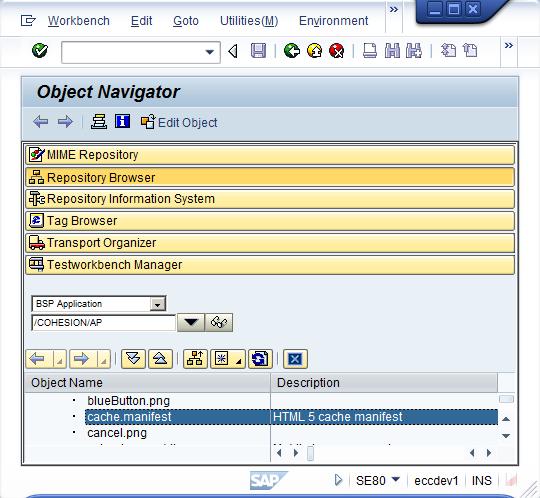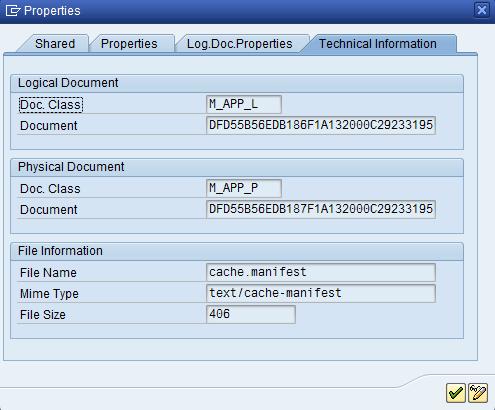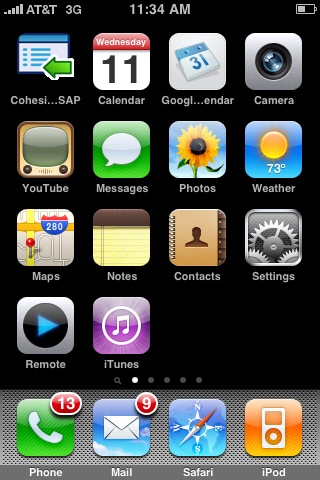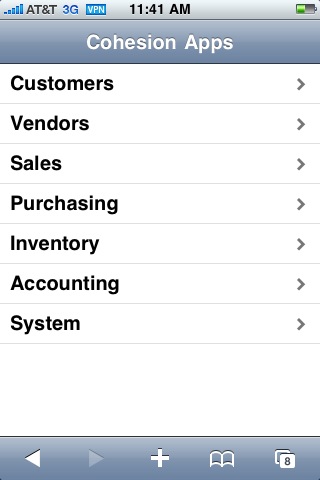When building SAP web applications for the latest mobile devices like the iPhone, consider using the HTML 5 application cache. This feature allows your app to store HTML, CSS, image and Javascript files permanently on the mobile device. You can start the application even when you’re offline and not connected to SAP. Once your connection to SAP is available, you can retrieve new business data from the application server. If you're on a slow mobile network, you can continue working even when your connection is dropped. Data can be retrieved from SAP using AJAX in HTML format and it can reside in your phone's browser memory for fast navigation.
You can write SAP mobile web apps in ABAP and use Business Server Pages for the HTML content. To use the HTML 5 application cache, you need to define a file called "cache.manifest" in the root of the BSP application tree via transaction SE80. The file should have MIME type "text/cache-manifest". See the screenshots below for an example from our application.


The first lines of a sample cache manifest file are listed below. It's a simple text file. To ensure that users have the latest version of your software on their phones, change the release date each time you publish a new version.

You can use logon tickets for authentication and set a ticket expiry time of 24 hours using the system parameter "login/ticket_expiration_time". This means that users can logon in the morning from their phones and stay connected throughout the day without re-entering passwords. We find that phone VPN connections sometimes drop out due to slow mobile networks. Logon tickets ensure that the user's authentication is maintained even when the connection is lost. The overall experience of web apps with the HTML 5 application cache is similar to a native iPhone application. You have the convenience of a web app that does not need approval by third parties like the Apple App store. HTML 5 is supported by the Android, Apple and Blackberry OS 5 mobile browsers. The screenshots below show our mobile application icon and the main menu. The menu is accessible even when the phone is offline as all files are stored on the phone.


Web applications using HTML 5 are a great way to extend your SAP system into the mobile world. You can build offline mobile applications using SAP data using ABAP and BSP.
